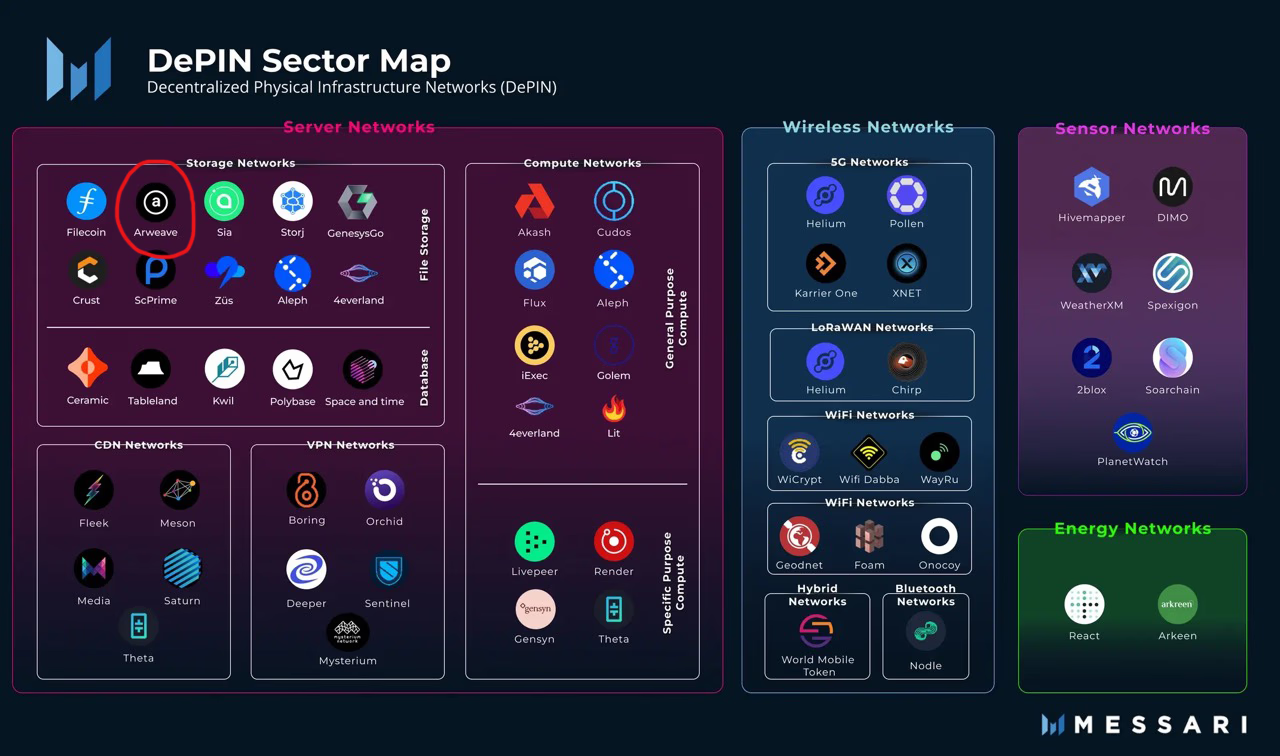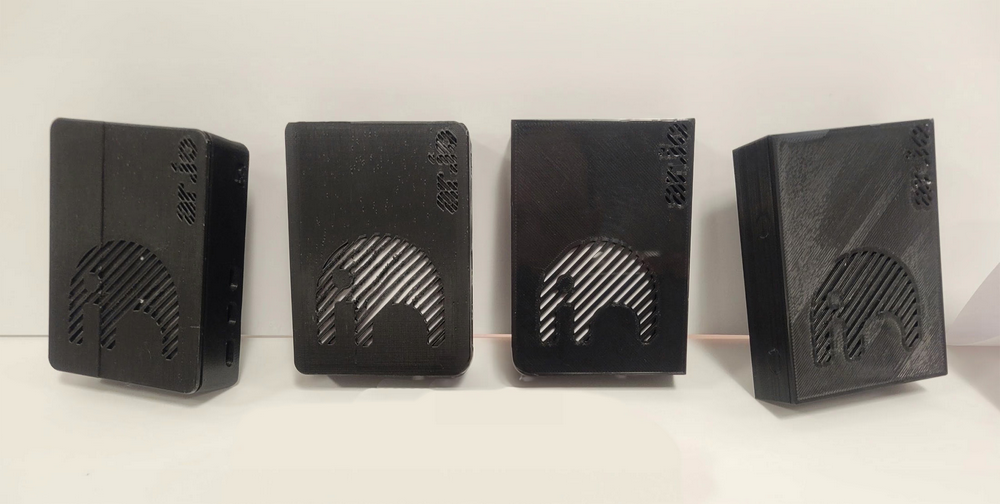One of the most promising narratives in the current cryptocurrency cycle is DePIN - Decentralized Physical Infrastructure Network. At its core, DePIN is a community-driven infrastructure that improves centralized digital services by leveraging the power of the crowd.
Based on this concept, AR.IO is expected to become an important part of the DePIN field, playing a role as a data access protocol. Let us first understand from a broader perspective.
DePIN Field Overview
Since the early days of Helium, the use cases of the DePIN project have expanded rapidly, from road mapping ( Hivemapper ), to collecting data sets for AI ( Grass ), to urban noise monitoring ( Silencio ), flight tracking ( Wingbits ) and even space weather analysis ( GEODNET ). DePIN is entering new areas and disrupting many existing technology companies in the process.
Arweave is considered one of the leading DePIN data storage networks, as shown in a recent chart from Messari:

So what is the positioning of AR.IO ?
AR.IO aims to decentralize, incentivize, and maintain access to the growing amount of permanent data on Arweave. As such, it provides a critical service in the Arweave ecosystem, removing access bottlenecks and ensuring that users have permissionless, globally distributed access to permanent data.
Just as Arweave is a DePIN storage protocol, AR.IO is a DePIN data access protocol.
Here is how AR.IO meets the definition of DePIN:
- Decentralization - There are currently hundreds of AR.IO gateways participating in the testnet, and more will join as Arweave's hyper-parallel AO computer develops.
- Physical Infrastructure - Although the data itself is not visible, the hardware running the gateway takes up physical space. You can run the AR.IO gateway on a simple Raspberry Pi, a home computer, or even a server in a Tier 5 data center.

- Network - AR.IO is a network whose gateways follow a unified protocol and are incentivized through IO token rewards. Observer nodes monitor the network to ensure that the gateways are always available and accessible.
AR.IO is currently in the testnet stage, and you can explore participating gateway nodes through Viewblock or the Gateway Explorer app. More dashboard metrics for AR.IO gateways are in development.
How do I get started?
Different DePIN projects vary in complexity, from UpRock ’s one-click simplicity to a complex setup for running a full Arweave node (requiring 158 TB of permaweb backup). Setting up an AR.IO gateway is somewhere in between, on the simpler end.
Running an AR.IO gateway currently requires the following:
- Your machine (even a $100 Raspberry Pi 5 will do)
- 10,000 test ARIO tokens (see below)
- Basic programming knowledge
To help you get started, AR.IO provides:
- Detailed gateway setup documentation
- Useful video tutorials
- Discord Community Support
Additionally, a simpler method for setting up the gateway is under development.
How does AR.IO DePIN incentivize?
AR.IO 's incentives are to reward participants who perform well, rather than focusing on punishing malicious actors. Specifically, the following are some of the incentives:
- Running nodes - AR.IO Gateways and Observer Nodes are currently compensated through tARIO (testnet ARIO tokens) rewards, which can be re-staked to the gateway or used to purchase ArNS names in the testnet. Joining the network requires 10,000 tARIO, which are available to users who successfully apply for the testnet .
- Delegated Staking - Gateway operators can delegate their stakes to the gateway, thereby leveraging more resources than individual staking. Delegated staking gives everyone the opportunity to participate and earn rewards in the AR.IO network, with a minimum participation threshold of 100 tARIO tokens. Operators can control the proportion of rewards allocated to delegated stakers. Rewards are automatically staked and can be withdrawn at any time, subject to withdrawal delays. See section 6.2.2 of the whitepaper for more details.
Advantages of early involvement
AR.IO is still in the testnet stage, and now is a good time to get involved.
It only takes 15-30 minutes to launch a gateway, which will help drive the decentralization of the Arweave ecosystem. Advanced users can tune the gateway for their own applications, but novice users can also easily complete the basic setup.













